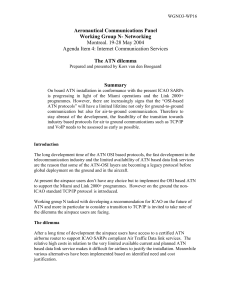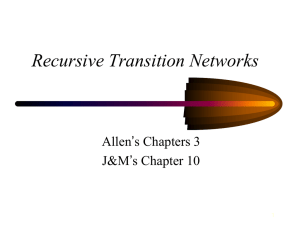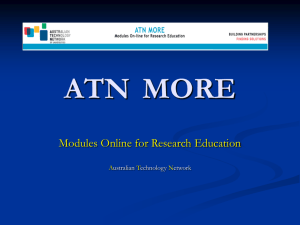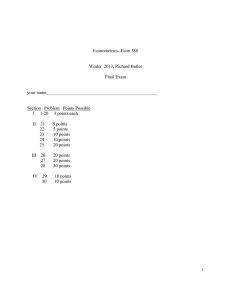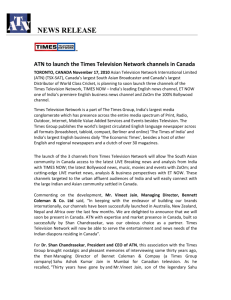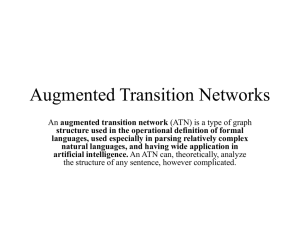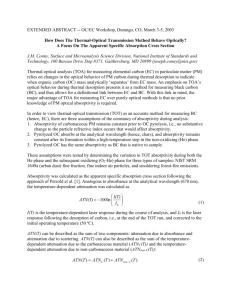ppt - ATN Conference
advertisement
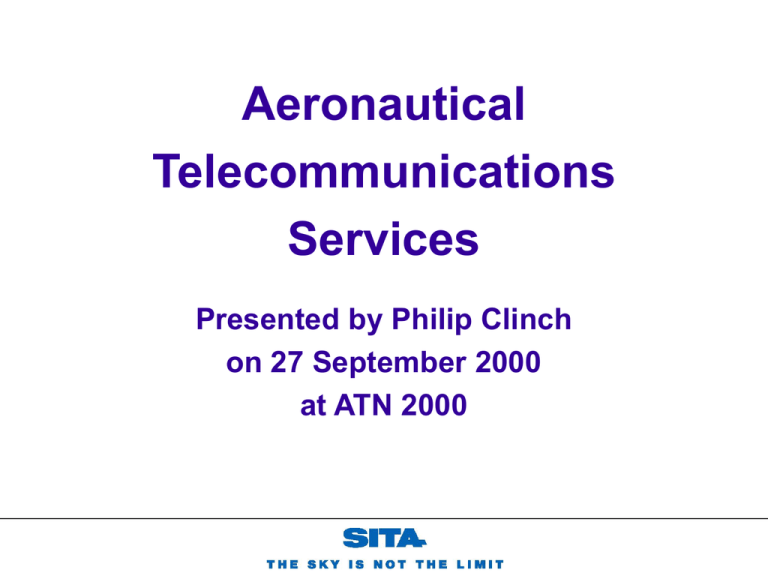
Aeronautical Telecommunications Services Presented by Philip Clinch on 27 September 2000 at ATN 2000 Facing up to the ATN The airlines established SITA (the International Organization for Aeronautical Telecommunications) to provide an international data network in 1948, just as the International Civil Aviation Organization began writing its convention Annex 10 standardizing “Aeronautical Telecommunications”. SITA now has to respond to ICAO’s latest addition to Annex 10, the ATN standard which specifies a new way of providing the terrestrial and air-ground data network services we already provide. Evolution of Air Transport Data Communications Up to 1990, the telecoms industry had not developed data network standards so SITA and the airlines developed and used airline industry standards. From 1990, SITA began implementing the telecoms industry standards: X.25, Internet Protocol, Frame Relay, Asynchronous Transfer Mode. SITA has implemented integrated digital voice and data service over Frame Relay and more recently also over IP. SITA core network evolution SITA has network access points in 220 countries, supporting 160,000 customer connections. The airlines have used SITA’s telecoms industry standard services to introduce new systems using generic interfaces, and today in particular Web based systems using IP. Airlines systems would only use an ATN Internet interface to networks also used by ATS providers so The number of airline systems using an ATN interface is not expected to justify SITA deploying ATN routers in the core network. ATS use of generic networks Many ATS providers operate X.25 data networks that transport radar data and AIS messages. ATS communications are increasingly using generic telecoms services: – The FAA Telecommunications Infrastructure (FTI) initiative seeks to replace the FAA’s leased lines with a Frame Relay and ATM backbone. – The Eurocontrol CFMU is seeking a regional IP service to enable the Enhanced Tactical Flow Management System. As these ATS communications will not use the ATN Internet, SITA can address them with the current generic network. ATN Specific Services The ATN standard specifies the following services: ATS Message Handling Service (AMHS) – AMHS is not an application, but rather a messaging service based on the X.400 standard. ATS Interfacility Data Communications (AIDC) – AIDC is the only terrestrial application designed to directly use the ATN Internet. AIDC is the exchange of Air Traffic Control information for active flights between FDPS’s, called On-Line Data Interchange (OLDI) in Europe. ATS Data Link Applications – CPDLC, ADS, CMA Which ATS ground systems will use the ATN Internet? ATS Message Handling Service (AMHS) – As AMHS has its own addressing scheme, AMHS systems can communicate via X.25 networks and do not require ATN Internet routers. This makes it difficult to develop a business case for deploying ATN routers to support AMHS. ATS Interfacility Data Communications (AIDC) – As AIDC is only used between FDPS’s, a transition from current FDPS interchange protocols such as OLDI to ATN would generate only a limited number of terrestrial ATN Internet terminals. FDPS’s that implement ATN Data Link applications are also likely to use it for AIDC. Aircraft use of the ATN Internet The aircraft data link service has evolved more slowly than the terrestrial services because of the need to upgrade avionics. Aircraft still use the ACARS link specified around 1980 for the transport of text messages. The ATN Internet design covers the interconnection of air-ground and terrestrial networks and this now seems likely to be its primary function. CPDLC usage in Europe and the USA requires better performance than ACARS can provide and is driving the implementation of the ATN internet. SITA ATN Implementation As the primary use of the ATN Internet will be for aircraft data link, the SITA ATN implementation is focussed on the AIRCOM service. SITA will at the end of 2000 begin deploying new VHF ground stations to provide ICAO VDL Mode 2 service supporting ATN Internet communications. The SITA deployment of ATN routers will be tailored to meet needs of airline and ATS customers. SITA is also implementing air-ground IP service but aircraft are only expected to use it for passenger services and file transfers. Conclusion As most airline and ATS ground systems are using the generic telecoms protocols, the terrestrial use of the ATN Internet seems likely to be very limited. Only aircraft data link applications can justify the use of the specialised ATN Internet protocol, and this should justify its use between the ground systems that host these applications. The ATN Internet needs to be implemented in aircraft systems quickly to avoid AOC data link applications migrating from ACARS to the planned IP networks, which would undermine the ATN business case.
